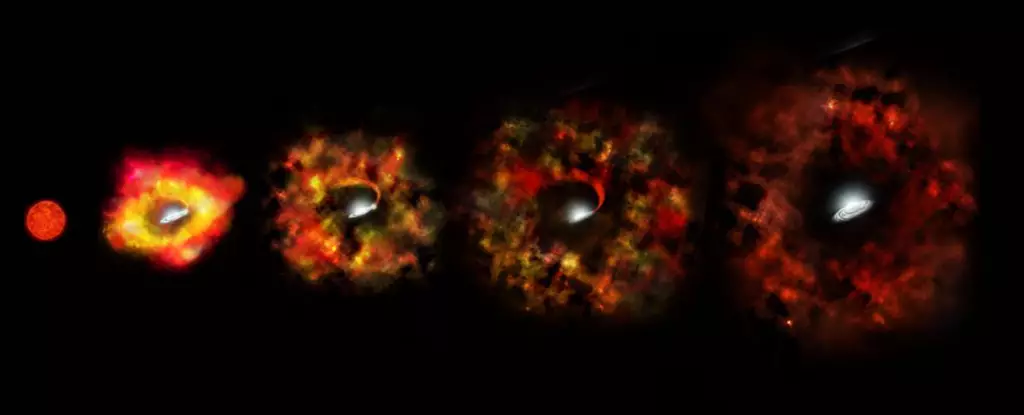In 2009, astronomers were left perplexed when a massive star, with a mass 25 times that of the Sun, appeared to vanish without a trace. This enigmatic celestial object, known as N6946-BH1, underwent a remarkable period of brightening, resembling the precursor to an explosive supernova event. However, instead of culminating in a spectacular explosion, the star inexplicably faded away. Recent data from the James Webb Space Telescope (JWST) has offered intriguing insights into the nature of this celestial mystery, challenging our understanding of supernovae and stellar mass black holes.
Initially, astronomers hypothesized that N6946-BH1 had collapsed, resulting in the formation of a black hole rather than the expected supernova. This hypothesis, however, remained speculative until now. Previous attempts to observe the star using the Large Binocular Telescope (LBT), Hubble, and the Spitzer space telescope were unsuccessful – the star seemed to be invisible to our telescopes. Nevertheless, the advent of the JWST and its superior instruments has allowed scientists to analyze data that reveals a significant discovery.
The recently published study based on data gathered by the JWST’s NIRCam and MIRI instruments has shed light on the mysterious fate of N6946-BH1. The analysis suggests the presence of a bright infrared source surrounding the original star’s position, which may indicate the existence of a remnant dust shell. This finding aligns with the theory that the star ejected material as it underwent rapid brightening. Alternatively, it is conceivable that the infrared glow originates from matter falling into the black hole, although this explanation appears less probable.
Interestingly, the research team identified not one, but three remnant objects. This implies that the previous failed supernova model is less plausible. Earlier observations, which lacked the necessary resolution, blended these three sources into one. Consequently, it seems more likely that the 2009 brightening was the result of a stellar merger – a star system comprised of two merging stars that subsequently faded.
While the evidence tilts towards the merger model, it does not entirely discount the failed supernova hypothesis. The complex interplay between supernovae and the formation of stellar mass black holes remains an unresolved question. Observations from the Laser Interferometer Gravitational-Wave Observatory (LIGO) and other gravitational wave detectors have confirmed the existence of stellar-mass black holes formed through mergers. However, the formation of the largest stellar black holes after supernovae events remains a mystery.
N6946-BH1 is located in a galaxy approximately 22 million light-years away from us, making JWST’s ability to discern multiple sources highly impressive. Furthermore, this discovery inspires hope among astronomers that similar stars will be observed in the future, enabling a deeper understanding of these celestial phenomena. With more data, scientists anticipate the ability to distinguish between stellar mergers and true failed supernovae, ultimately enhancing our comprehension of the final stages of stellar evolution as stars approach becoming stellar-mass black holes.
The enigmatic vanishing of N6946-BH1 continues to captivate and challenge astronomers. The recent breakthrough made possible by the JWST has unveiled crucial information regarding the fate of this mysterious star. The detection of a bright infrared source and the presence of three distinct remnants suggest that the failed supernova hypothesis is less likely, favoring the stellar merger model instead. Nevertheless, our understanding of supernovae and the formation of stellar mass black holes remains incomplete. As we unravel the intricacies of the universe using advanced instruments like the JWST, we inch closer to comprehending the final stages of stars as they evolve into stellar-mass black holes.


Leave a Reply